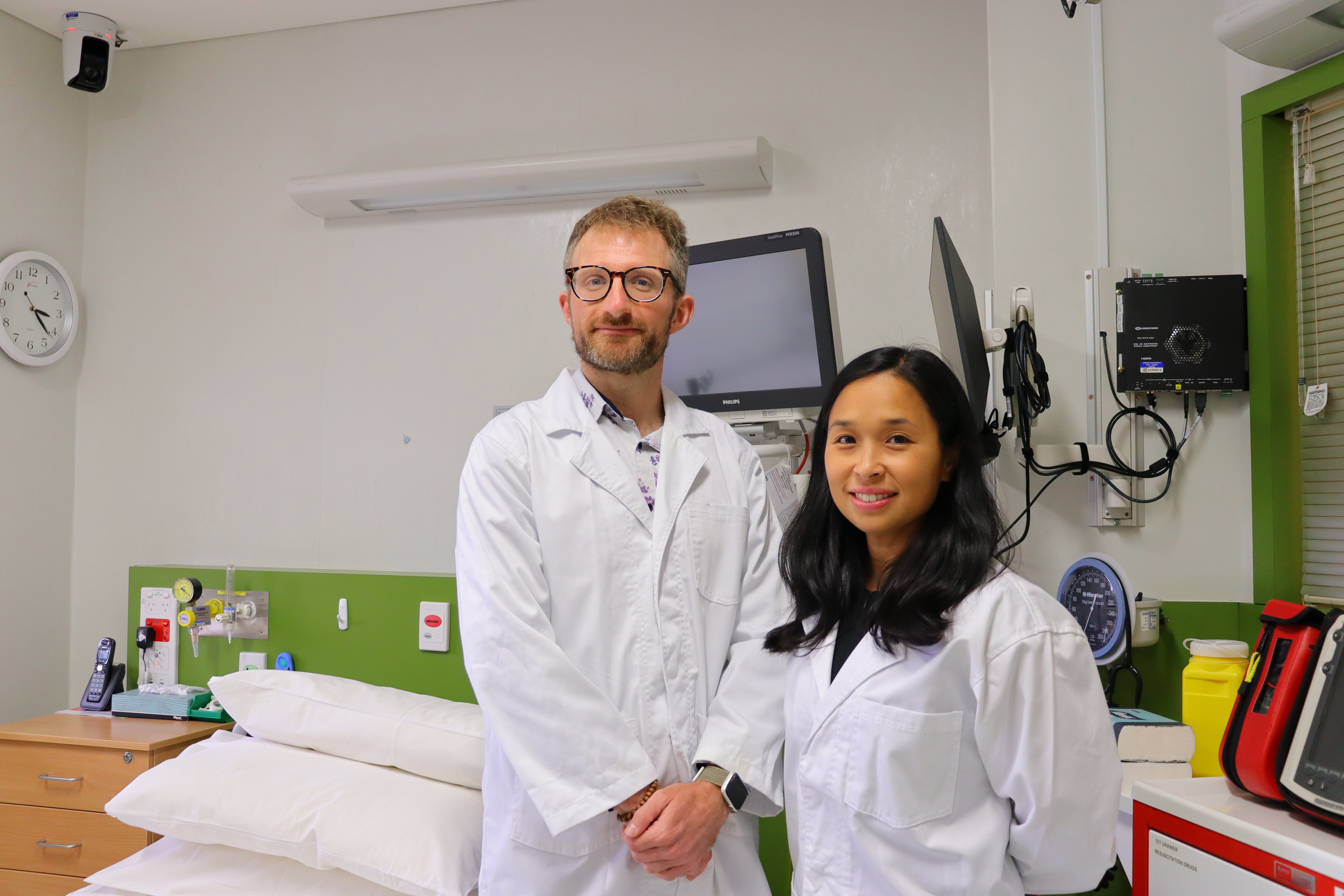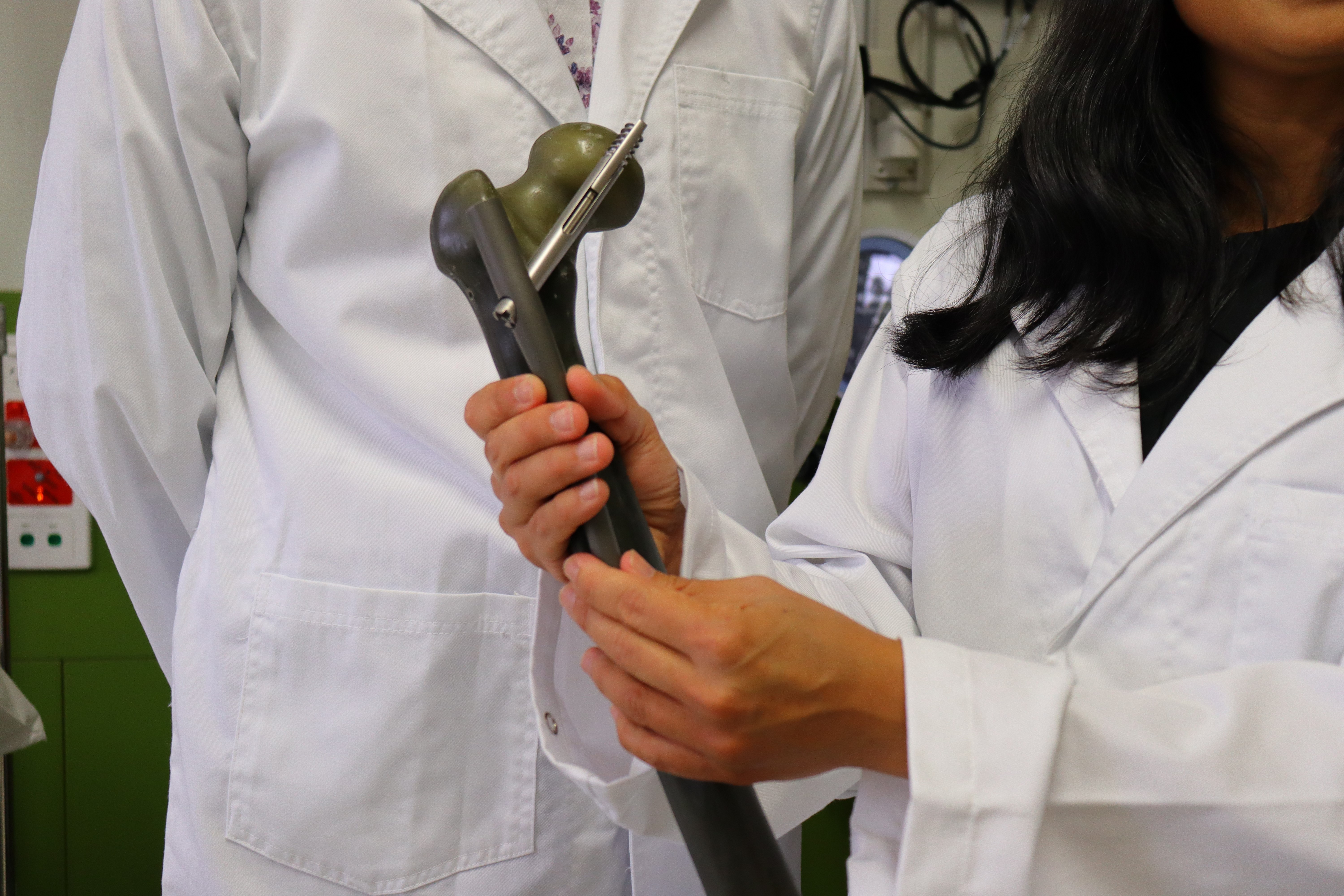Not all orthopaedic implants are created equal. Surgeons repair bone fractures using metal plates and screws but sometimes the screws loosen and the surgery needs to be repeated. Previous expandable screws increased screw fixation strength but were more difficult (or impossible) to remove and increased surgery time.
Dr Intan Oldakowska and Dr Matthew Oldakowski have worked for 10 years in biomedical engineering and first spotted an opportunity to improve surgery outcomes during their PhD studies at Curtin University.
As now-entrepreneurs and co-founders of REX Ortho, a spin-out from Curtin University, they received an NHMRC Development Grant to test a new expandable screw for orthopaedic surgery. Dr Oldakowska and Dr Oldakowski started with hip fractures because they are the most common fracture surgery and screw failures can lead to a loss of independence, disability and death.
This story is part of our 10 of the Best -Fifteenth edition. 10 of the Best is an annual NHMRC publication, showcasing 10 NHMRC-funded health and medical research projects. See more 10 of the Best.

About 1 in 3 adults aged 50 and over dies within 12 months of suffering a hip fracture and 40% never return to pre-fracture mobility.
They developed a screw that is stronger, more easily expandable and can also be removed easily at a later date, if required. The screw also fits with existing surgical workflows, without increasing surgery time.
‘Better rehabilitation of hip fractures—which includes improving surgery results and reducing complications—presents a huge societal good and also savings to taxpayers funding the medical system,’ said Dr Oldakowska.
‘The funding from NHMRC was a real lifeline for us. To get to that commercial stage we used the grant to collaborate with surgeons and conduct biomechanical testing and animal studies. That made us attractive for external investment and commercial translation,’ said Dr Oldakowska.
‘The financial support for collaborative innovation, where surgeons are part of the development cycle, is crucial,’ she said.

To create something ready for human clinical trials, the researchers have overcome challenges, in particular balancing commercial, manufacturing, and clinical requirements.
Inspired by the potential for improving patient outcomes, both researchers have undertaken PhDs in the field of biomedical research but have moved beyond academia.
‘We went down this path, away from a traditional academic career, because we really wanted to have impact from our research and our technology. We weren’t really happy to do research, publish a paper and have it possibly sit there and maybe not get used,’ said Dr Oldakowski.
‘Because we wanted to collaborate broadly with industry, surgeons, other researchers, and with all sorts of people doing manufacturing (for example, industrial designers) we realised we became less researchers and more innovators’.
‘It’s been brilliant that the NHMRC grant has enabled us to work with the best surgeons in the country and to conduct world-first lab and animal trials to move this technology so much closer to operating theatres,’ he said.
Next steps
Drs Oldakowska and Oldakowski have since attracted external investment and a partnership with the AO Foundation, the world's largest network of orthopaedic surgeons. REX Ortho is currently raising further investment to take the product to market.
‘The technology could be used in a range of other orthopaedic surgeries, including spine fixation. We’re really excited to see where we can take it. And we believe that successful commercialisation will also improve Australia’s standing on the world stage for research translation and innovation and build the health and medical research ecosystem,’ said Dr Oldakowski.
CIAs
Dr Intan Oldakowska and Dr Matthew Oldakowski
Institution
Curtin University
Research title
Superior surgical fixation using a novel orthopaedic expandable fastener
Team
Professor Markus Kuster
Mr Robert Day
Professor Garry Allison
Professor Gabriel Lee
Professor Thomas Kirk